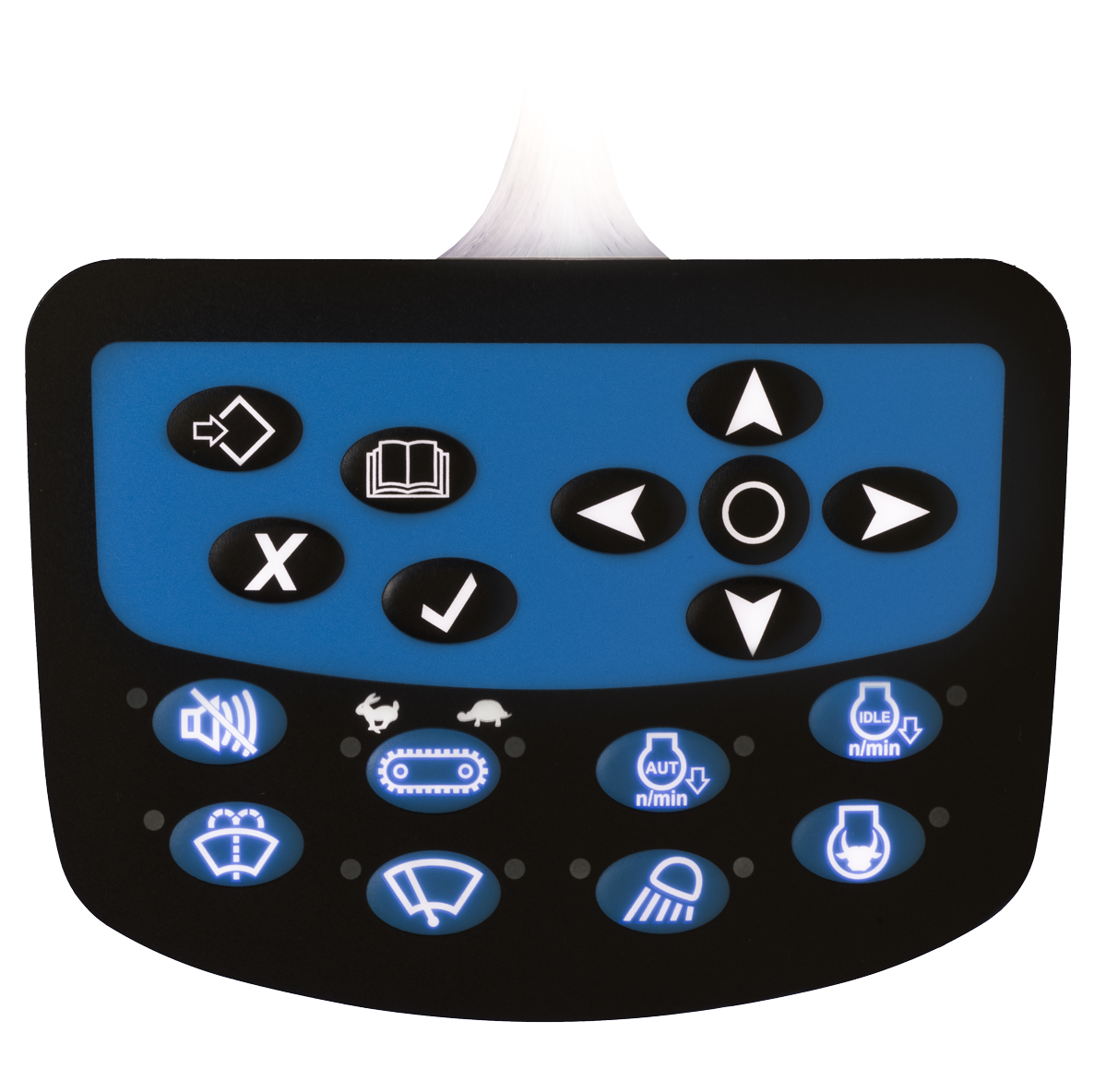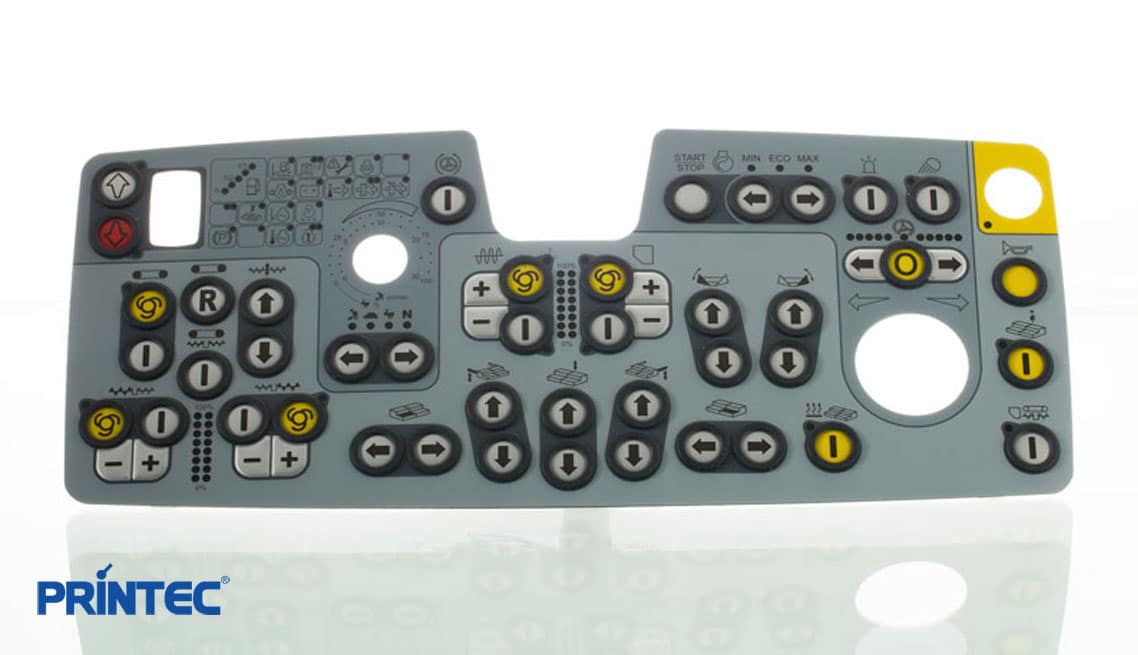All Regarding Membrane Layer Switch Over: Comprehending Its Style and Performance
When you think of the control interfaces in modern-day gadgets, membrane switches commonly come to mind. These components are greater than simply switches; they mix style and capability seamlessly. Comprehending just how they function and what makes them efficient can alter your point of view on daily electronics. But, there are nuances to their design and performance that you could not understand. Allow's explore what sets membrane layer switches apart from various other control systems.
What Are Membrane Layer Switches?

Membrane layer switches can likewise be personalized relating to shape, dimension, and graphics, allowing makers to create one-of-a-kind user interfaces customized to certain products. Generally, membrane switches play a substantial role in improving customer experience throughout a large variety of applications.
How Membrane Layer Switches Job
When you press a key on a membrane layer switch, it activates a straightforward yet efficient mechanism. membrane switch manufacturer. The top layer, commonly made of flexible material, pushes down onto a conductive layer under it.
You'll discover that the tactile responses differs based upon the button style, supplying either a soft click or a more obvious reaction. When you launch the key, the membrane go back to its original position, reopening the circuit and quiting the signal. This process occurs almost instantly, making certain a responsive individual experience.
Membrane switches are prominent due to their resilience and resistance to dirt and moisture, making them perfect for different applications, from family home appliances to clinical tools. Comprehending this procedure aids you appreciate their extensive use.
Key Elements of Membrane Switches
Understanding the essential elements of membrane buttons is fundamental for grasping their performance and layout. The safety layer guards against ecological variables and use, prolonging the switch's life-span. By comprehending these elements, you'll acquire insight into just how membrane layer changes run and their relevance in different applications.
Products Utilized in Membrane Switch Over Style
The performance and sturdiness of membrane layer switches over heavily depend on the materials used in their style. You typically encounter polyester and polycarbonate as key substrates because of their exceptional toughness and adaptability. These materials resist scratches and chemicals, making them optimal for requiring environments.
The conductive layers commonly use silver or carbon, chosen for their reliability and conductivity. membrane switch manufacturer. Silver gives premium efficiency, while carbon is a cost-efficient choice. For the overlay, you might think about a matte or shiny finish, depending upon your visual demands and individual experience
Make certain to select adhesives that hold up against environmental elements like temperature level and moisture. Picking the right materials will certainly assure your membrane button stands the test of time.
Design Factors To Consider for Membrane Switches
While developing membrane layer buttons, it's essential to take into account numerous factors that influence their performance and customer experience. Beginning by concentrating on the layout and switch dimension; make certain they're instinctive and easy to browse.
Validate your layout accommodates ecological aspects, like moisture or temperature level variants, which can affect performance. By carefully considering these components, you'll produce a membrane layer button that boosts functionality and contentment.
Applications of Membrane Buttons
Membrane layer switches are functional elements discovered in various applications, from commercial tools to consumer electronics. You'll see their influence in machines that require durable user interfaces and in gadgets that gain from smooth designs. Understanding these applications helps you value the performance and usefulness of membrane layer switches in everyday modern technology.
Industrial Equipment Use
When you're looking to improve the performance of industrial tools, membrane layer buttons use a trustworthy service that integrates durability with easy to use style. These buttons are best for rough atmospheres, providing resistance to dirt, moisture, and chemicals. Accept membrane layer switches to simplify your procedures and improve overall efficiency.
Consumer Electronic Devices Combination
In the domain of customer electronics, membrane layer switches play a necessary role in boosting user communication and tool capability. You'll discover them in devices like microwaves, push-button controls, and video gaming consoles, supplying a seamless means to interact with modern technology. Their smooth design permits easy combination into numerous products, making controls instinctive and easy to use. With their capability to incorporate graphics and backlighting, you can appreciate a contemporary visual that matches the tool's general appearance. Membrane switches additionally guarantee durability and resistance to dirt and wetness, expanding the life-span of your electronic devices. By choosing membrane layer switches, you enhance not simply the performance but also the style of your devices, making everyday communications smooth and satisfying.
Advantages and Disadvantages of Membrane Buttons
While membrane layer switches use a variety of advantages, they additionally come with some drawbacks that you should take into consideration. One substantial benefit is their portable layout, making them ideal for space-constrained applications.

Nevertheless, there are disadvantages. Membrane buttons can have a much shorter life expectancy compared to mechanical switches, specifically under heavy use. They can likewise be less tactile, which may affect user comments during operation. In addition, if harmed, repairing them can be difficult and usually calls for complete substitute. Eventually, their get more sensitivity to severe temperature levels and environmental problems might limit their performance in specific settings. Balancing these advantages and disadvantages will certainly help you establish if membrane layer buttons are the best suitable for your project.
Frequently Asked Concerns
How Much Time Do Membrane Layer Changes Generally Last?
Membrane layer switches commonly last between 5 to 10 years, depending upon use and ecological problems. You'll intend to examine factors like wear, direct exposure to moisture, and temperature level changes to evaluate their longevity effectively.
Can Membrane Layer Switches Be Personalized for Particular Layouts?
Yes, you can customize membrane layer buttons to fit certain styles (membrane switch manufacturer). You'll have the freedom to select colors, forms, and designs that match your task's needs, guaranteeing they mix flawlessly with your general aesthetic
What Is the Price Array for Membrane Layer Change Production?
The expense range for membrane button production commonly drops in between $1 and $10 per device, relying on elements like style complexity, quantity, site and products. You can obtain quotes from producers to find the ideal choice.

Are Membrane Switches Water-proof or Immune?
Membrane buttons can be designed to be water resistant or resistant, relying on materials utilized and construction techniques. If you require them for damp environments, assure you define those needs throughout the style process.
How Do Membrane Switches Compare to Conventional Switches?
Membrane buttons are normally thinner and a lot more flexible than conventional buttons, offering a sleek design. Learn More They're frequently simpler to clean up and integrate, yet may not give the responsive responses you're made use of to with mechanical options.
Conclusion
